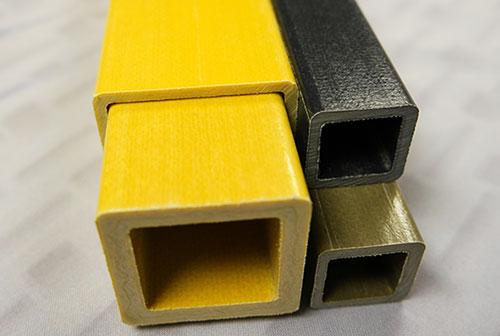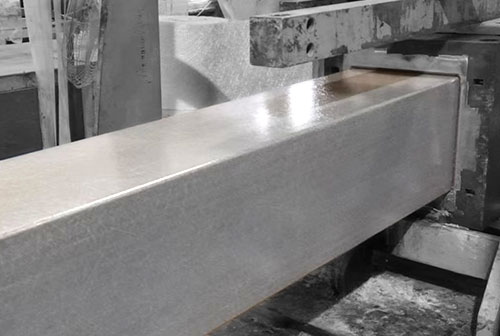In the realm of construction and engineering, FRP square tubes have emerged as a compelling alternative to traditional steel square tubes. These composite tubes, composed of fiberglass fibers embedded in a resin matrix, offer a unique blend of strength, lightweight properties, and corrosion resistance, making them suitable for diverse applications. However, the strength of FRP square tubes is not solely determined by the materials used; it is also significantly influenced by the manufacturing process.
Factors Affecting the Strength of FRP Square Tubes:
1- Fiber Orientation: The orientation of fiberglass fibers plays a crucial role in determining the strength of FRP square tubes. Unidirectional orientation, where fibers are aligned in a single direction, provides maximum strength along that axis. Multidirectional orientation, where fibers are arranged in multiple directions, offers enhanced strength in various directions.

FRP square tube fiber orientation
2- Resin Type: The type of resin used in the FRP square tube matrix significantly impacts its strength properties. Epoxy resins, known for their high strength and stiffness, are commonly used for demanding applications. Polyester resins, while less expensive, offer good strength and chemical resistance.
3- Reinforcement Type and Content: The type and amount of reinforcement used in the FRP square tube can influence its strength. Continuous fiberglass reinforcements, such as rovings or mats, provide higher strength compared to chopped strands. Increasing the reinforcement content generally leads to higher strength but may also impact cost and weight.
4- Curing Process: The curing process, which transforms the resin from a liquid state into a solid matrix, is crucial for achieving optimal strength. Proper curing temperature, pressure, and time are essential to ensure complete polymerization and maximize the strength of the FRP square tube.

FRP square tube curing process
5- Quality Control Measures: Stringent quality control measures throughout the manufacturing process are paramount for ensuring consistent strength and reliability. This includes monitoring raw material quality, maintaining proper process parameters, and conducting thorough inspections at various stages of production.
Strength Properties of FRP Square Tubes:
1- Tensile Strength: The tensile strength of FRP square tubes refers to their ability to withstand forces that tend to stretch or pull the material. It is measured in units of stress, such as pounds per square inch (psi) or megapascals (MPa).
2- Flexural Strength: Flexural strength, also known as bend strength, measures the resistance of FRP square tubes to bending forces. It is determined by applying a load at the midpoint of the tube and measuring the deflection before failure.
3- Compressive Strength: Compressive strength indicates the ability of FRP square tubes to withstand forces that tend to compress or crush the material. It is measured by applying a load along the length of the tube and recording the load at which it fails.
Conclusion:
The strength of FRP square tubes is a complex interplay of factors, starting with the selection of high-quality materials and extending to the intricacies of the manufacturing process. Fiber orientation, resin type, reinforcement choices, curing methods, and rigorous quality control measures all contribute to achieving exceptional structural integrity. By carefully considering these factors, manufacturers can produce FRP square tubes that meet the demanding requirements of diverse construction and engineering applications.
 +86 15303735673
+86 15303735673 Jessica@frpzs.com
Jessica@frpzs.com
 Technical Data
Technical Data











